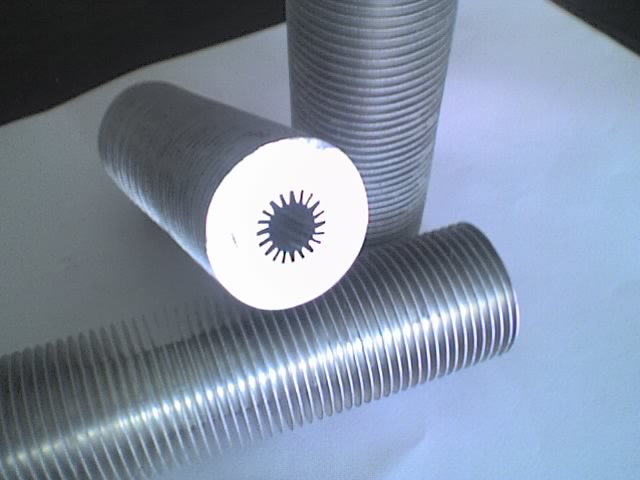Lord Fin Tube--Internal finned tube for heat exchanger
What is heat exchanger with internal fins tube?
The Internal finned tube type heat exchanger is extensively utilized in various industries such as petroleum, chemical, metallurgy, and electric power due to its simple structure, easy fabrication, wide range of materials, and adaptability. It serves as the primary heat exchanger in industrial production. However, the current metal tube heat exchangers have limitations in heat transfer efficiency, heat transfer area, and capacity. Their overall heat transfer coefficient is not high.
The conventional tube gas-gas heat exchangers have a low integrated heat transfer coefficient, typically ranging from 15 to 20 W/m²·°C. Meanwhile, the heat transfer coefficient for tube-type heat exchangers with fins ranges from 30 to 35 W/m²·°C. To overcome the limitations of conventional tube heat exchangers, the concept of finned tube heat exchangers has emerged. Among them, the internal finned tube heat exchanger has shown promising results and has been successfully implemented in various industries.
2.1 Internal Finned Tube Heat Exchanger
The key features of the innovative internal finned tube heat exchangers include:
1. Enhanced heat transfer by extending the surface area of the heat exchanger inside the tubes. The longitudinal straight rib fins increase the heat transfer coefficient by approximately 3 to 4 times compared to smooth tubes.
2. The fins are welded to the tube using a high-efficiency welding process, resulting in a welding rate of 100%. This welding process is similar to that used in general tube-type heat exchangers.
3. Compared to conventional tube heat exchangers, the internal finned tube heat exchangers offer the following advantages:
(a) Improved heat transfer coefficient for gas exchange. The finned tubes achieve a fin-to-tube ratio of 4 to 6, leading to a significant enhancement in heat transfer within the tubes.
(b) Stronger heat transfer capability. The heat transfer coefficient of the finned tubes is approximately A - A²/α, where A represents the overall heat transfer coefficient and α denotes the coefficient of heat transfer in the tubes.
(c) Enhanced heat transfer with increased tube wall temperature. As the heat transfer coefficient (A) increases, the temperature difference (ΔT) between the tube wall and fluid also improves, resulting in better heat transfer performance.
(d) Compact structure. The improved heat transfer coefficient reduces the required heat exchange area, leading to a reduction in the overall volume of the heat exchanger.
2.2 Applications of Internal Finned Tube Heat Exchangers
We have successfully applied internal finned tube heat exchangers in the steam superheater of the Shougang waste heat utilization project. This application demonstrated the high heat transfer coefficient and superior performance of enhanced heat transfer. The results obtained during production were highly satisfactory.
2.3 Prospects of Internal Finned Tube Heat Exchangers
Since the development of internal finned tube heat exchangers in June 2000, they have shown great potential for applications in heating, power generation, petroleum, chemical, and other industries. In industrial furnaces, the use of these heat exchangers improves combustion temperature, enhances thermal efficiency, and reduces energy consumption. Consequently, air preheaters find wide-ranging utility.
Internal finned tube heat exchangers can withstand high air temperatures, especially in elevated temperature conditions. For instance, when the flue gas temperature reaches 320°C, the air temperature can reach 420°C, and the tube wall temperature can be as high as 570°C. In such scenarios, the inner fin tubes made of carbon steel can effectively handle the temperature differentials, thus improving the heat exchangers performance under diverse operating conditions.
3. Conclusion for Internal finned tube heat exchanger
The internal finned tube heat exchanger represents a domestically developed, highly efficient heat exchanger. Its broad applicability in industries such as metallurgy, electric power, petroleum, and chemical make it a promising technology.


